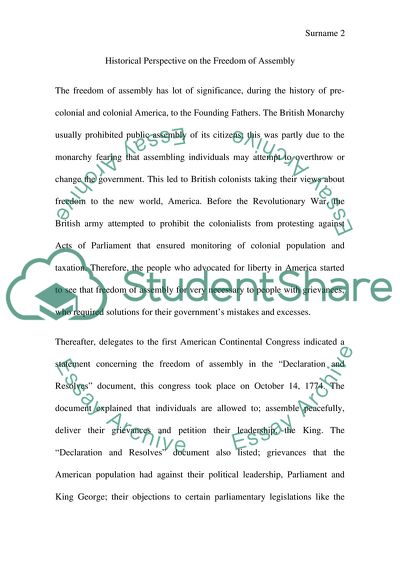Cite this document
(Historical Perspective on the Freedom of Assembly Essay Example | Topics and Well Written Essays - 1250 words, n.d.)
Historical Perspective on the Freedom of Assembly Essay Example | Topics and Well Written Essays - 1250 words. https://studentshare.org/social-science/1820463-freedom-of-simply
Historical Perspective on the Freedom of Assembly Essay Example | Topics and Well Written Essays - 1250 words. https://studentshare.org/social-science/1820463-freedom-of-simply
(Historical Perspective on the Freedom of Assembly Essay Example | Topics and Well Written Essays - 1250 Words)
Historical Perspective on the Freedom of Assembly Essay Example | Topics and Well Written Essays - 1250 Words. https://studentshare.org/social-science/1820463-freedom-of-simply.
Historical Perspective on the Freedom of Assembly Essay Example | Topics and Well Written Essays - 1250 Words. https://studentshare.org/social-science/1820463-freedom-of-simply.
“Historical Perspective on the Freedom of Assembly Essay Example | Topics and Well Written Essays - 1250 Words”. https://studentshare.org/social-science/1820463-freedom-of-simply.


